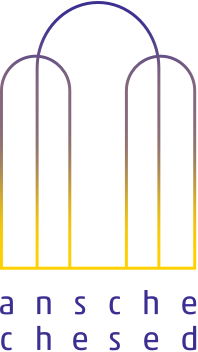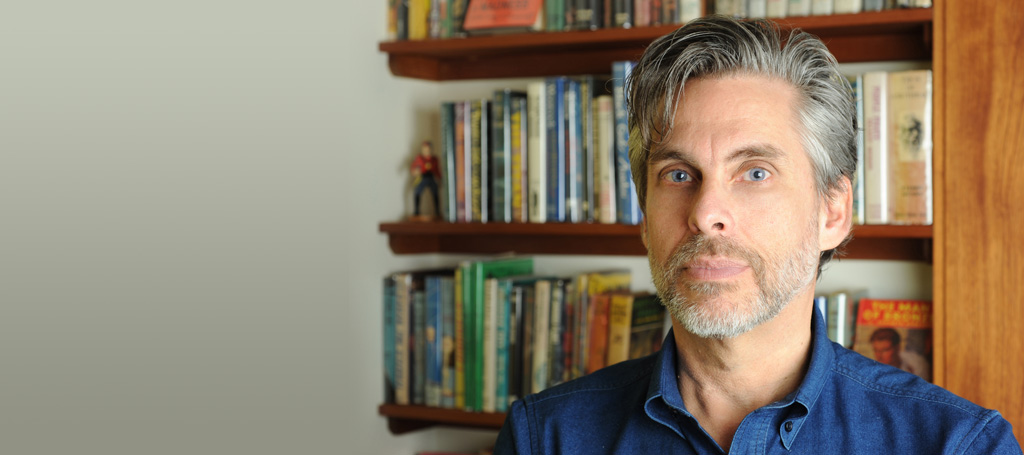In May, at the Hebrew Union College commencement, the novelist Michael Chabon encouraged the new Reform rabbis on a revolutionary path. They should “knock down the walls” that confine Jewish community in self-built ghettos, “eruvim of intolerance.” Not just ethnic distinctions between Jew and gentile, but the whole system of sacred boundary-drawing must go. No more Passover nights “different from all other nights,” no more Shabbat candles and Havdalah demarking kodesh and chol. “Cut it away,” he said, for “violence is the inevitable result of all those distinction-drawing ideologies,” as it always divides the world into the saved and damned.
Chabon aims at two targets: he thinks a religion of boundaries is a rotted foundation supporting Israel’s oppression of the Palestinians. Dismantle mental checkpoints between “us” and “them” so we can dismantle physical ones. While this seems overly sentimental as an approach to the Israel-Palestine conflict, there is probably something here worth heeding as a critique of contemporary Jewish culture and Israeli politics. But let’s leave that for another day.
Chabon’s other target is what he considers the chauvinistic narrowness of our endogamy norm. When Jews marry Jews, they build a “ghetto of two.” Chabon “abhor[s] homogeneity and insularity” and instead loves “mongrels and hybrids and creoles … ambivalence, fluidity, muddle, complexity, diversity, creative balagan.”
He urged the new Reform rabbis to go beyond accepting or even affirming intermarriage to recommending it as its own optimal norm. His remarks inspire me to share a few contrasting reflections to our AC community on how I see this very critical topic.
The celebrated novelist’s approach did not go unnoticed. Leading scholars of American Judaism responded with sociological arguments that insularity does not doom minority communities, but rather the lack of sufficient distinctiveness to bond members in a common identity.
There is no denying that unprecedented intermarriage rates are transforming the American Jewish community. But how? Will intermarriage doom us, shrink us and lose souls, as the mystics and statistics say it will? Or might it open us up with new possibilities, as the famous novelist holds?
How should religious communities respond to new realities? Dig in and “fight back?” Quit fighting, and accept the inevitable? Say yes to love and damn the statistics? This conversation is roiling my colleagues in the Conservative rabbinate. As you probably know, some rabbis and synagogues – like our neighbors at Bnai Jeshurun – now perform inter-marriages where the couple commits to “creating a Jewish home and raising any children as Jews.”
I myself will continue to uphold the traditional rule. I believe that rabbis and shuls can support, welcome and celebrate couples and families, even without performing their wedding ceremonies.
Virtually everyone in Conservative Judaism agrees that the old punitive attitudes should be softened, and vigorous positive steps are needed. Indisputably, statistics are inauspicious regarding the commitment and behavior of intermarried Jews. But statistics are brittle and broad, and individual lives are flexible and idiosyncratic. No family’s life matches all the data patterns.
Our shul community is home to wonderful families where one Jewish and one non-Jewish adult raise Jewish kids, participating with depth and enthusiasm. They are role models, thriving under what are not always the easiest conditions. You, non-Jewish parents, who bring your kids to Hebrew school and Shabbat services, who come to our classes and volunteer for AC – thank you so much. We want more people like you. Since there are only going to be more intermarried families, we should do what we can to support and encourage families like yours, so that you will be among the minority who maintain Jewish homes, not the majority who don’t. In one small example, we are among many Conservative shuls who have added an “interfaith families” page to our website, offering, I hope, a welcoming face.
Even those like me, who favor the traditional norms on interfaith wedding ceremonies, wonder where we might find more flexibility about what we can do for intermarried couples, in addition to what we cannot. For instance, I believe – and will put it into practice for the first time on August 25, in Minyan M’at – that it is appropriate to have a celebratory aliya to the Torah [aufruf] in advance of a couple’s wedding. To me, if a Jew wants to come to the Torah to mark an important event in his or her life, that’s terrific. The non-Jewish spouse should stand beside the Jewish partner, and I will be happy to wish them joy together. What is the alternative? To wish them sorrow? No one should want a loving couple to break up. There is enough loneliness in the world already, and it would be actively unethical to hope for someone’s pain.
We can make welcoming gestures like an aufruf, and can open doorways for intermarrying couples, without undermining what remains a communal norm: that in-marriage is the optimal Jewish course. It is not necessarily better for each individual. It does not inevitably guarantee Jewish commitment. Conversely, intermarriage does not preclude it. But, in general, marriages between two Jews tend to produce families with richer Jewish lives.
One might argue this point with survey data and sociology. But I would prefer to make a cultural argument against Chabon’s claim, and explain why I think his approach is too superficial to stimulate meaningful new Judaism.
Chabon sings the praise of the Creole, of diverse backgrounds producing an exciting new synthesis. He uses the Israeli slang term balagan to signal this sense of free mixing. But balagan doesn’t have particularly positive resonance. It means “total chaos,” “a complete mess,” or “a disaster area.” Chabon thinks balagan connotes wild creativity, but actually it means incoherence. And incoherence is no basis for building a thick culture.
Anthropologists use the terms thick and thin to describe different cultural modes. Universal norms are thin, because they are too general. They apply to no communities in particular and reflect no specific experiences. Everyone has more or less equal purchase. But houses that belong to everyone belong to no one.
Thick cultures are dense with shared symbols and stories, layered with specific experiences reflecting shared pasts and shared futures. They are an individual community’s life’s blood. The philosopher Michael Walzer wrote that both thin and thick elements are part of every community’s values and experiences. You need both a universal sense of yourselves as human beings, and a particular sense of yourselves as individuals. This polarity reflects the necessary character of any human society: universal because it is human, particular because it is a society. Societies are necessarily particular because they have members and memories, members with memories not only of their own but also of their common life. Humanity by contrast has members but no memory, so it has no history and no culture, no customary practices, no familiar life-ways, no festivals, no shared understanding of social goods. [Thick and Thin: Moral Argument at Home and Abroad, 1994, p. 13-14.]
The Judaism I want to practice lives within a thick society: a particular group of human beings who share stories, memories, a calendar, a vocabulary, jokes, values and dreams. We share a history and a destiny. That’s what makes us a tribe. Tribal may be an unpopular word nowadays, but it is inextricable from what it means to be a thickly cultured community. The thickest cultures – especially minority cultures like ours – thrive best when all family members, each in idiosyncratic ways, take on the shared stories and behaviors and say: “This is who I am. These are my people. I belong.”
Chabon thinks he belongs to a tribe and wants his kids to “marry-in,” too. But his tribe is very different from mine: “I want them to marry into the tribe that prizes learning, inquiry, skepticism, openness to new ideas… that enshrines equality before the law, and freedom of conscience, and human rights…. that sees nations and borders as antiquated canards and ethnicity as a construct prone, like all constructs, to endless reconfiguration.”
I like most (not all) of those things too. But that’s not a culture. This “Judaism” is absolutely nothing more than post-modern Western progressive liberalism. It may be right about many things. But it is very thin. It has no Shabbat. No feasts. No fasts. No prayer book. No midrash. No mitzvot. No sacred song.
Being tribal doesn’t require bigotry or isolation, contra Chabon. I favor learning from other cultures and even sampling, borrowing, and occasionally stealing. In turn, I’m happy to lend out our own. But creative cultural fluidity works only when people have core identities to begin with. A language can assimilate a loan word to its own native grammar, but it cannot speak meaningfully using multiple different grammars at once.
Also, endogamy norms are not racist: every person from every background is invited to join our people as full and equal members. I tell my own children – as well as those whom I have met as rabbi, in shul, school and camp – that, yes, I do hope they chose to marry other Jews. And I do not care if they marry born-Jews, for Jews-by-choice are 100% members of our tribe.
When people from our community choose to marry non-Jews, I invite the couple to explore conversion, with me or another rabbi. We’ll all be happy to help you explore whether this journey is for you. And even if conversion is not for you, or perhaps not yet for you, we at Ansche Chesed will still be eager and ready to congratulate you on your love and help you bring your family all the Jewish practice and learning we can.





